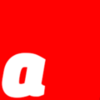 |By Matein Khalid|I had written a column two weeks ago outlining my view that US equities faced a dangerous autumn and the S&P 500 index was set for a fall of 150 points. However, even I did not expect the S&P500 index to fall 52 points on Friday (the Dow dropped 394 points and NASDAQ 133 points), its worst performance since the Brexit shock. It was even more alarming that the Volatility Index (VIX) spiked 38% in a single trading session after the equities sell off accelerated. The immediate catalyst for the stock market’s malaise was North Korea’s nuclear test and Boston Fed President Eric Rosengren’s rate hike musings.
|By Matein Khalid|I had written a column two weeks ago outlining my view that US equities faced a dangerous autumn and the S&P 500 index was set for a fall of 150 points. However, even I did not expect the S&P500 index to fall 52 points on Friday (the Dow dropped 394 points and NASDAQ 133 points), its worst performance since the Brexit shock. It was even more alarming that the Volatility Index (VIX) spiked 38% in a single trading session after the equities sell off accelerated. The immediate catalyst for the stock market’s malaise was North Korea’s nuclear test and Boston Fed President Eric Rosengren’s rate hike musings.
Yet North Korea’s nuclear brinkmanship has defined Asian geopolitics since the death of Kim Il Sung in 1994 and a Fed rate hike in December was telegraphed into Chicago money market futures. These factors alone do not explain the market’s sudden U turn. The NASDAQ hit a record on Wednesday at 5284, then sank to 5125 on Friday. The Volatility Index (VIX) was abnormally low all summer, as low as 12 when the markets reopened on Tuesday after the long Labour Day weekend. Yikes!
It is significant that all ten S&P500 sectors fell on Friday, though financial dropped the least as the yield on the ten year US Treasury note rose to 1.67% and the US dollar resumed its safe haven role. The 200 day moving average on the S&P 500 is 2060, 65 points above Friday’s close. If the stock market does not hold 2060, this sell off could become ugly next week and be remembered in history as a ursine “back to school” Wall Street temper tantrum. The 9% rise in the stock market since Brexit had created an overbought, overvalued (17.8 times forward market that was vulnerable to the slightest hint of bad news, such as the North Korean test, the Boston Fed (a dove on the FOMC!) president’s rate comment or an uptick in the US dollar. There was poor market breadth, dismal earnings growth and growing nervousness about Hilary Clinton’s lead over Donald Trump as the endgame for election season begins. I was shocked by the Pavlovian rush to embrace US equities by even seasoned fund managers I met on a recent trip to Europe. A more nuanced paradigm of world finance would serve investors well.
Governor Kuroda of the Bank of Japan and Mario Draghi of the ECB have both acknowledged that they have reached the limits of central bank monetary surplus. This triggered a sharp rise in Japanese and German bond yields that led to the spike in the US Treasury bond yields. Central bank money printing caused the epic rise in global risk assets. If central banks back off, the seven year bull market loses its most fundamental anchor. Of course, if the Fed obsesses about financial markets, the markets obsess the Fed. If the S&P 500 index continues to fall amid a rise in volatility, there is zero risk of a rate hike when the Yellen FOMC convenes on September 21.
A spike in volatility is the kiss of death for US high yield debt, the junk bond market created by Mike Milken and the failed I-bank Drexel Burnham Lambert. Note that the high yield index fund (symbol NYG) is up 18% since the energy bond sell off in February. Average yields were 10% in February but have compressed to a mere 6% now. The global scramble for yield has led to a tsunami of new issues by companies whose debt is as toxic as it is leveraged. A credit world where Sanofi and Henkel can issue negative yield corporate debt is also a world where leveraged lambs are led to the slaughter. If markets have veered from greed and fear, as a 38% spike in volatility suggests, it is time to short the US high yield exchange traded fund (symbol HYG). Default rates have begun to creep higher. Oil prices are not the only variable in the junk bond market. Current spreads do not compensate for rising duration and default risks. Life insurer shares are highly leveraged to a rise in interest rates. This makes MetLife, which trades at an earnings multiple of 7, a natural bond market hedge.
Note that Brazil’s index fund EWZ sank 6% on Friday as even the whisper of a Fed rate hike means a bloodbath for emerging markets. The Philippines ERF fell 8% for the week thanks to Duterte. The Russian equities index fund (RSX) is also a short at 19 for a 17 target.
Emerging Markets – Strategy ideas in Asia and South America
The August payrolls data meant a soft US dollar, a rise in gold and, above all, strength in emerging market currencies. The Brazilian real has risen a fabulous 23% this year and Sau Paulo is the world’s hottest stock exchange. The South Korean won is at 15 year high at 1100. Only the Mexican peso is in the dumps, thanks to Wall Street angst over President Trump even though the Banco de Mexico could well hike its policy rate in December and the Hacienda has posted a primary budget surplus (moral of the tale? Buy the Mexican peso on the risk aversion sell off!).
The MSCI emerging markets index is up 14% but indices mean squat to me. While $60 billion in inflows have lifted many boats, it is time to be selective as OPEC meets in Algeria, US electorate votes in November and the Federal Reserve could raise interest rates at any time. Dilma’s impeachment in Brazil, India’s GST tax, Turkey’s failed coup attempt, the Hong Kong Shenzhen Connect Scheme and Saudi Arabia’s Vision 2030, Pakistan and Colombia’s geopolitical turnaround and Russia’s ruble debt rerating provided us with strategic money making opportunities in 2016. What next?
I believe the Hong Kong H share market rally will continue as the world is far too pessimistic on large cap, cyclical China. The Hang Seng China Enterprise Index (HKCEI) was up 8.9% last month alone as two third of index companies blew apart profit indices. Though the H shares index bottomed in April at 6.4 times earnings, the HKCE is still inexpensive at 8.5 times earnings even though Beijing’s monetary and fiscal stimulus has begun to goose profits in cyclicals.
Rodrigo Duterte, a self-confessed killer, is a disgrace to the Philippines and the Manila stock market. His abusive language against President Obama has triggered foreign investor selling in Manila. Even though property developer Megaworld rose 25% after I recommended it in this column, I believe Manila is now the most expensive stock market in Southeast Asia at a time of rising sovereign and financial risk. The next secular bull market is in Widodo’s Jakarta, not Duterte’s Manila. Indonesia has embraced reforms, contained inflation, attracted offshore wealth with its tax amnesty, anchored the rupiah with high real rates (a buy signal when the US economy goes Goldilocks, as it does now), Bank Negara’s new monetary transmission regime and continued foreign inflows in Indonesia equities.
Pakistani equities will continue to deliver fairy tale returns even though Karachi is the best performing stock market in Asia in 2016 and Pakistani equities have delivered 25% annual returns in US dollars since 2011. Pakistan trades at 8.7 times forward earnings. The Habib Bank shares I recommended in April at 174 rupees are now 230 rupees, up 35% in five months! There are at least four double baggers in Pakistan even now. Will a Fed rate hike in December unnerve Karachi? Yes. A correction in the index to 34 – 35,000 will be the ideal entry point for new money.
I was not surprised that Colombia was the world’s best performing emerging market in August, up 10%. This haunted land of Gabriel Garcia Marguez and Shakira and the late, unlamented Don Pablo Escobar of the Medellin cocaine cartel has had a tragic, violent past. Yet the Colombian government’s peace deal with the Marxist guerillas of FARC ends a 50 year old civil war, Latin America’s oldest. There are 7 million internal refugees in Colombia, more than in Iraq and Syria.
The crash in crude oil and coal prices (60% of GDP), El Nino and an inflation spike had led a 20% plunge in the Colombian peso in 2015. Yet the end of the civil war has triggered huge offshore buying interest in the Colombian peso, up 10% in 2016. Bancolombia and Avianca New York ADR will remain white hot as long as Saudi Arabia, Iran, Iraq and Russia do not disappoint the world oil market in Algiers.
Thanks to Argentina’s spectacular $16 billion sovereign new issue, the rally in Russian Eurobonds and Indian rupee debt, this column caught three of the biggest macro trades in emerging markets. $12 trillion in German/Swiss/Japanese debt with negative yields is a huge argument to invest in high yield sovereign debt. If my oil call is correct, it is time to load up on bombed out Angolan and Nigerian debt. The best turnaround stories in world finance? Pakistan, Argentina, Brazil, Peru and Colombia.
Stock Pick – Value and risk in large cap biotech shares
Merger mania has led to fairy tale outcomes on some biotech shares on Wall Street. For instance, oncology biotech Medivation (MDVN) tripled in value in 2016 once Pfizer won it after a frenzied bidding war. However, I am skeptical about the near term prospects of large cap biotechs. Hilary Clinton and the loony left of the Democratic Party are going to instigate public outrage on drug pricing this election season. When Mrs. Clinton tweets, the biotech sector plummets on NASDAQ and Mrs. Clinton could well be the 45th President of the United States. Aetna’s decision to exit 11 Affordable Care Act (ACA) markets is also negative for Big Pharma/biotech shares. The regulatory climate for drug research could turn ugly – and I would not even rule out the prospect of drug price controls under the Clinton White House. I expect a healthcare sell off into the election that could create opportunities and even new risks (Clinton want to reduce biologic patents from 12 to 7 years).
AbbVie (ABBV), spun out of Abbot Laboratories in 2013, trades at only 13 times 2016 earnings at my preferred entry price of $60. Yet this is no baby Big Pharma but quite possibly the cheapest large cap biotech on the planet, with $26 billion in sales and at least 15 – 16% annual EPS growth potential. True, investors diss AbbVie because a single blockbuster drug Humira still accounts for 60% of global revenues and even management concedes that, despite the $30 billion it has spent to reduce exposure, Humira will still account for 53% of sales in 2020. Humira also makes AbbVie both a one trick pony and vulnerable to competition from biosimilars.
Humira, $14 billion in sales, is the world’s blockbuster drug for rheumatoid arthritis and Crohn’s disease. It faces both intellectual property challenges and competition from generic biotech drugs (biosimilars) in 2018. This is the reason the stock market values AbbVie at only 11.8 times forward earnings. Management also paid $4 billion in milestone payments in its $9.8 billion takeover of cancer biotech Stemcentrx. Imbruvica, the leukemia/mantle cell lymphoma drug that was the crown jewel of Pharmacyclics portfolio, for which AbbVie paid $20 billion in 2013.
Wall Street, as usual, grossly undervalues late stage drug pipelines when a company’s revenue is dominated by a single blockbuster. Yet Imbruvica could well be a $5 billion blockbuster in the next four years. At my $60 entry price, AbbVie trades at 11.6 times forward earnings and a 3.6% dividend yield that I believe reduces downsize. The idea is to use option strategies to design a 20% total return trade on AbbVie.
Amgen (symbol AMGN) is one of the world oldest, classiest and most valuable biotech companies. While Amgen has the most diversified product offering and drug pipeline among LargeCap Biotechs, thanks to blockbusters Enbrel, Prolia and Neulasta, I would prefer to buy the shares at 145 – 150 and not the current 166 as I write since I am certain that Amgen could pay a fat takeover premium to goose its drug pipeline. At 145, Amazon trades at valuation of 12 times forward earnings, which I believe is the rock bottom price we will see in 2016. I had gone gaga on Amgen at just above 100 three years ago when Amgen bought Onyx Pharma for its blockbuster Kyprolis but its disappointing sales reflects the cutthroat competition in the multiple myeloma market. Amgen has also developed the biosimilar (ABP 501) that will take on Humira. The Brexit debacle and the Chinese yuan distress in 2016 saw Amgen fall to 145.
It is undeniable that revenue growth and operating margins at Amgen could decline due to falls in legacy branded drug sales after 2018. I expect Amgen to trade in a 150 – 180 range in 2016.
Biogen (symbol (BIIB) surged from 240 to 315 after the FDA fast tracked its Alzheimer’s clinical trial. I would take profits on Biogen as this move, while justified, is too huge relative to the risks in this disease domain, the ultimate killer app in global biotechnology.





![dubai flood is artificial rain behind uaes rare torrential weather[1]](https://thearabianpost.com/wp-content/uploads/2024/04/dubai-flood-is-artificial-rain-behind-uaes-rare-torrential-weather1-e1713378975696-550x550.jpg)
